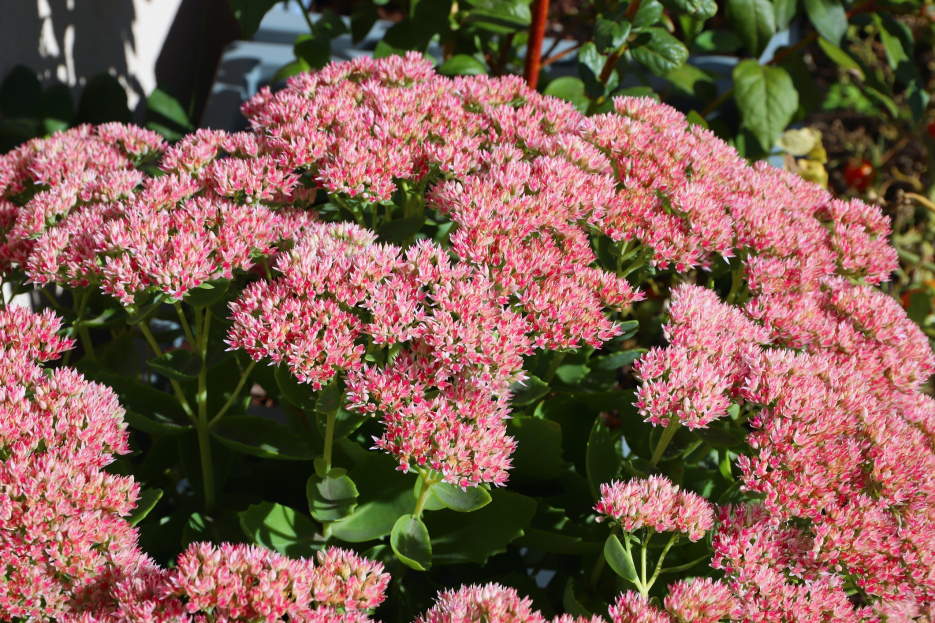
Sedum, also known as stonecrop, is a popular succulent that thrives in a variety of conditions, making it a great choice for both beginners and experienced plant enthusiasts. Known for its attractive fleshy leaves and clusters of star-shaped flowers, Sedum is an easy-to-care-for plant that can add a touch of beauty to your indoor space. Here’s a guide to help you care for your Sedum houseplant and keep it thriving.
Sedum plants love bright, indirect light. Ideally, place your plant in a spot that receives several hours of sunlight each day. A south or west-facing window is usually perfect for these sun-loving succulents. While Sedum can tolerate some direct sunlight, it’s best to avoid long periods of intense sun exposure, as this can cause the plant to become sunburned, leading to brown spots or scorched leaves.
If you don’t have access to a bright window, Sedum can also adapt to lower light conditions, though it may become leggy and less compact. In such cases, consider using a grow light to supplement natural light and encourage healthy growth.
One of the most important aspects of caring for Sedum is ensuring that it’s not overwatered. As a succulent, they adapt to dry conditions and prefers to be watered sparingly. Overwatering can lead to root rot, a common issue for Sedum plants.
To water your Sedum, allow the soil to dry out completely between waterings. Stick your finger into the soil to check the moisture level – if it feels dry at least an inch below the surface, it’s time to water. When you do water, make sure to water thoroughly, allowing the water to drain out of the bottom of the pot. Avoid letting the plant sit in water, as this can cause the roots to rot.
During the winter months, when the plant is dormant, reduce watering even further. Sedum doesn’t require as much water in the colder months, and keeping the soil too moist can cause the plant to become stressed.
Sedum prefers well-draining soil, as it is a succulent that stores water in its leaves. A cactus or succulent potting mix is ideal for Sedum, as it allows excess water to drain away quickly. If you’re using regular potting soil, consider mixing in some sand or perlite to improve drainage.
When choosing a pot for your Sedum, make sure it has drainage holes. This is essential to prevent water from accumulating at the bottom of the pot, which can lead to root rot. Sedum doesn’t need to be repotted frequently, but you should repot it every couple of years or when it outgrows its current container.
Sedum is well-suited to warmer temperatures, typically thriving between 60°F and 80°F (15°C to 27°C). While it can tolerate higher temperatures, it’s important to avoid placing it in a location that experiences extreme heat or drafts. Sudden temperature fluctuations can stress the plant, leading to stunted growth or leaf drop.
As a succulent, Sedum doesn’t require high humidity. In fact, it prefers dry air and can suffer in overly humid environments. If you live in a humid climate, make sure your Sedum is placed in a well-ventilated area to ensure proper air circulation.
Sedum is a low-maintenance plant that doesn’t require frequent fertilization. However, feeding it during the growing season (spring and summer) can help promote healthy growth. Use a balanced, water-soluble fertilizer diluted to half strength and apply it every 4-6 weeks. Avoid fertilizing during the fall and winter months when the plant is dormant.
If you’re growing your Sedum in nutrient-rich soil, you may not need to fertilize at all. Over-fertilizing can lead to leggy growth, so it’s important to avoid excessive feeding.
Sedum is a relatively low-maintenance plant when it comes to pruning. However, you can trim back any leggy or overgrown stems to keep the plant looking tidy. Use clean, sharp scissors or pruning shears to avoid spreading diseases.
Deadheading, or removing spent flowers, is also a good practice to encourage new blooms. While Sedum flowers are beautiful, they may not last long, so cutting them back will help the plant focus its energy on producing new growth.
Sedum is relatively pest-resistant, but it can occasionally attract mealybugs, aphids, or spider mites. These pests can be removed by gently wiping the leaves with a damp cloth or using insecticidal soap or neem oil.
Sedum is also susceptible to fungal diseases, especially if it’s overwatered. Root rot, in particular, can be a problem if the soil remains too moist for extended periods. To prevent fungal infections, make sure your Sedum has good drainage, avoid overhead watering, and ensure that the plant is in a location with good air circulation.
Sedum is a hardy plant that can tolerate cooler temperatures, but it may go dormant during the winter months. During this time, it’s important to reduce watering and stop fertilizing. The plant may lose some of its leaves, but don’t be alarmed – this is normal.
If you’re growing Sedum indoors, you can leave it in its current spot during the winter. Just be sure to provide it with adequate light and avoid overwatering. Once spring arrives, you can resume regular care to encourage new growth.
Sedum is generally considered non-toxic to pets, making it a safe choice for households with cats and dogs. However, as with any plant, it’s still a good idea to keep it out of reach of curious pets. While Sedum is not toxic, ingesting large quantities of any plant can cause digestive upset in pets.